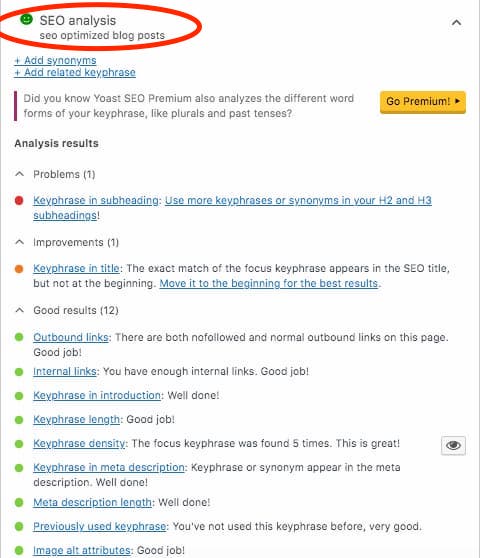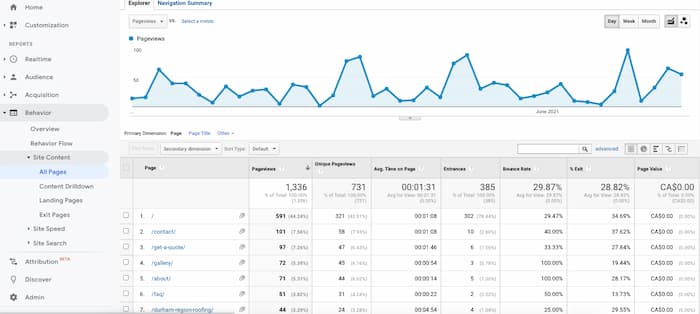7 Basic SEO Tips To Generate More Leads From Your Website
The pandemic might be on the way out but one thing it will leave behind is a raging and reinvigorated market for eCommerce and online business. What better time than now to capitalize on the high volumes of searches that will most likely become the norm? Whether you own a new website or are simply a hands-on person who does all of your online marketing it will only take a few basic tips to generate more leads from basic SEO principles.
Why focus on SEO for lead generation?
People are not only looking for more products, services, and entertainment online but they are willing to make larger purchases more frequently. This trend will only intensify as can be seen from the top 10 native ad networks.
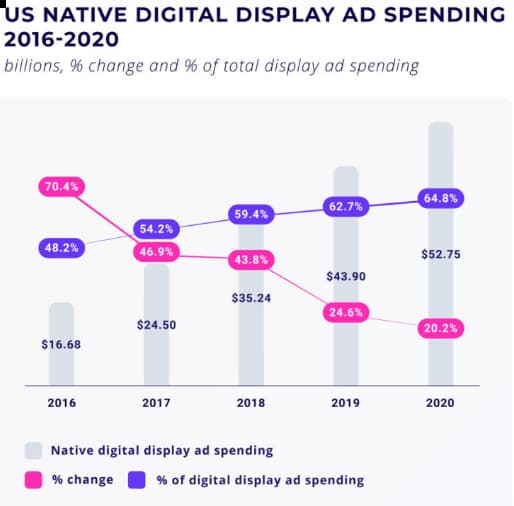 Digital ad spend has been on the rise and even more so, native advertising has accelerated over the last few years. These are all indications of where the real treasure trove of leads and sales can be found; the organic search results. Most companies have multiple goals, however, 66% of those goals are focused on lead generation.
Digital ad spend has been on the rise and even more so, native advertising has accelerated over the last few years. These are all indications of where the real treasure trove of leads and sales can be found; the organic search results. Most companies have multiple goals, however, 66% of those goals are focused on lead generation.
Paying for ads is an effective lead generation strategy, however, it doesn’t account for the lion’s share of website traffic. You can generate high volumes of organic traffic and multiply your leads by simply applying fundamental SEO principles.
Although the following SEO tips are fairly basic, the effects on traffic are exaggerated for local business owners (who follow a local SEO strategy). The same rings true for websites in a non-saturated niche where link building is less of a ranking factor and great content reigns supreme.
#1-Learn basic SEO strategy
Search engine optimization is no longer a luxury but a necessity. Field of Dreams may still be worth watching but the whole “If you build it they will come” thing does not apply to websites.

Just because you have the best-looking website in the world doesn’t mean people will find it. Just as every business needs IT Management and a strategic marketing plan to achieve meaningful goals, every website needs an SEO strategy to drive substantial traffic and qualified leads.
An effective SEO strategy boils down to 4 major pillars of development:
- Keyword targeting
- Content development
- On-page optimization
- Link building
Pu these pillars in place and you have a solid foundation for driving organic traffic to your website.
#2-Target keywords that generate an adequate search volume
As a business owner, it’s important to be aware of the search volume your target keywords generate. Many business owners make the mistake of deciding on a target keyword based on their own assumption of what’s popularly used to search for their product or service.
Problems arise when keywords are chosen without checking to see how much search volume they generate on a monthly basis. Even if you rank on the first page for a target keyword you won’t see any website traffic if no one is using it in searches.
Consider this example of how a small change to a target keyword can make a huge difference to your search volume. Compare the following keywords:
Cast aluminum patio furniture vs. cast aluminum patio sets
Here is the search volume in Canada:

Now take a look at the difference in U.S. monthly searches:

Don’t you think there’s some important information to be aware of by making this subtle change in keyword targeting?
Pro Tip: Use a keyword tool. Even if it’s a free tool, which has limitations, you can choose a keyword that adds more value to your business. Base your decision on high search volume, low competition and commercial value.
Not only can you confirm your ideas generate adequate traffic but you can also browse through long lists of computer-generated ideas as well.
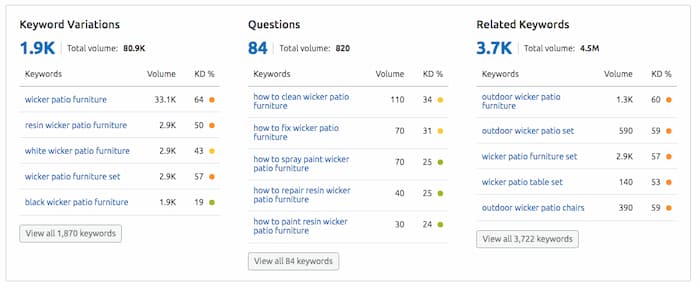 #3-Plan out a basic content strategy
#3-Plan out a basic content strategy
It becomes very clear what type of content you have to publish when you pinpoint the intention behind the keywords you target. Google displays pages that it believes are the best answer to search intent. This refers to the ability of your web page to completely satisfy the true motivation and underlying intention of a keyword.
Content marketing and SEO are inseparable when you break down the relationship. Superior content surfaces near the top of searches much faster than “thin” or poor-quality content. In fact, according to Bill Lentis, 72% of B2B businesses are producing new content regularly to increase search visibility and target new audiences.
To compete at the top of your niche, every website needs a basic content strategy to grow and reach its target audiences.
Pro tip: Analyze the first page of search results for your target keyword. Read every page in the top 10 positions to get a feel for the content type, content depth and overall quality content. Publish pages that meet and exceed the standards being set on the SERP to achieve a top 10 position. Rinse and repeat for related keywords and topics.
#4-Meet the basic criteria for on-page optimization
In terms of generating quality leads for your website, this aspect of SEO is incredibly important and one of the most common mistakes made by small businesses. Ranking for a keyword with a poorly optimized page is like shooting darts blindfolded.
 Unless your name is Mike Tyson (who hit 2/3 bull’s eyes) don’t leave it to chance!
Unless your name is Mike Tyson (who hit 2/3 bull’s eyes) don’t leave it to chance!
Pro tip: Include your keyword in the important parts of the metadata of a page. If you were to read the title or URL, it should give you an accurate idea about the content of your page.
While this may sound basic, it can make a massive difference in the traffic to your website especially if you’re a local business.
For example, consider the title and URL of the following websites service page and try to determine what industry this business competes in:
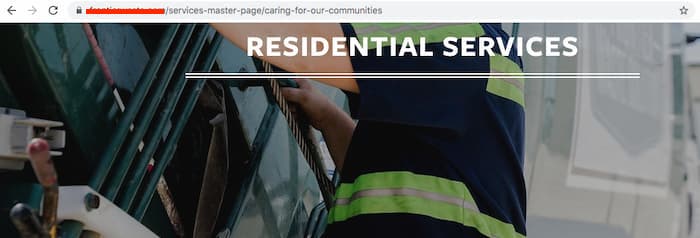
- Title: Residential services
- URL: xxx.com/services-master-page/caring-for-our-communities
If you guessed waste management you must be some sort of sorceress or magician.
 If you agree that based on the title and URL it’s hard to tell what keyword the page is targeting, then how would a search engine know where to rank this page based on its metadata?
If you agree that based on the title and URL it’s hard to tell what keyword the page is targeting, then how would a search engine know where to rank this page based on its metadata?
Although the keyword “residential services” gets about 1.3k searches a month, there are no waste disposal companies anywhere near the top of the search results for this keyword.
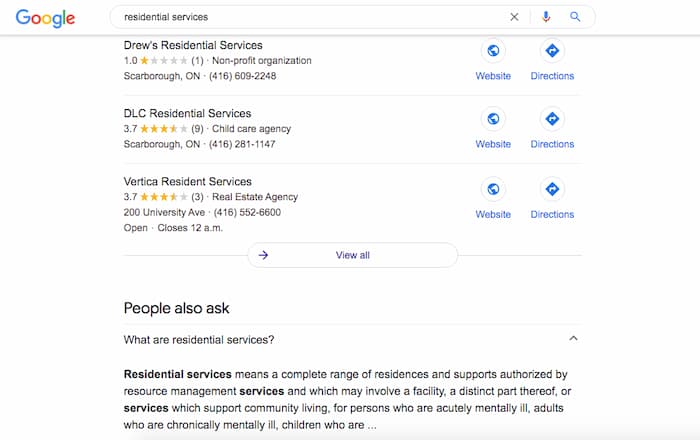 The intention is vague and therefore requires an additional descriptive keyword to be triggered in the search results.
The intention is vague and therefore requires an additional descriptive keyword to be triggered in the search results.
The slug of URL (/caring-for-our-communities/) is not even a keyword. This means the URL of the page is not optimized for anything in particular and does not receive any volume of searches at all.
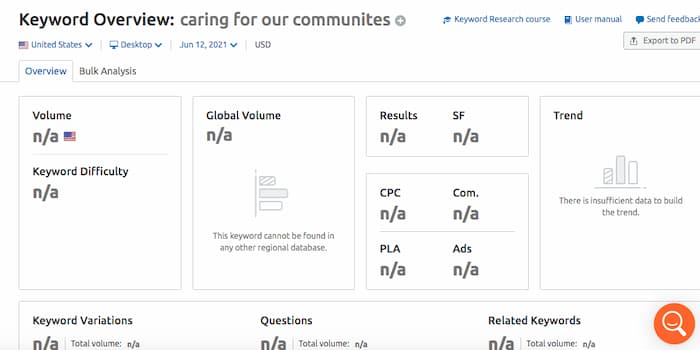
Pro-tip: Give your page the best chance of appearing for a keyword-related search by using a plugin like Yoast. Once it’s activated you just make the adjustments that are suggested until the light turns green. The image below is from an article titled 10 Expert Tips For Writing SEO Optimized Blog Posts
#5-Have a basic link building strategy in place
The final stages of developing high rankings come down to link building. Google still ranks websites highly based on the quantity and quality of the backlinks that point to a website. There are many proven methods of link-building strategies. The best way to start is to choose one that suits you best and keep it simple by only linking from related websites.
For example, if you’re in the roofing industry, link from other roofing websites as well as other verticals within the industry. A business website that sells skylights is a good example.
Think of links as creating entry points to your website. Who do you want to land on your website? If you link from low-quality unrelated websites, you won’t get visitors who engage with your content. You want visitors landing on your pages who eventually become qualified leads.
Pro tip: Choose websites that have a good flow of organic traffic that rank for keywords similar to your own. To check this metric, enter the URL of any website into SEMRush in the domain overview to see whether a website generates organic traffic. Click on the value to explore the keywords your link prospect ranks for.
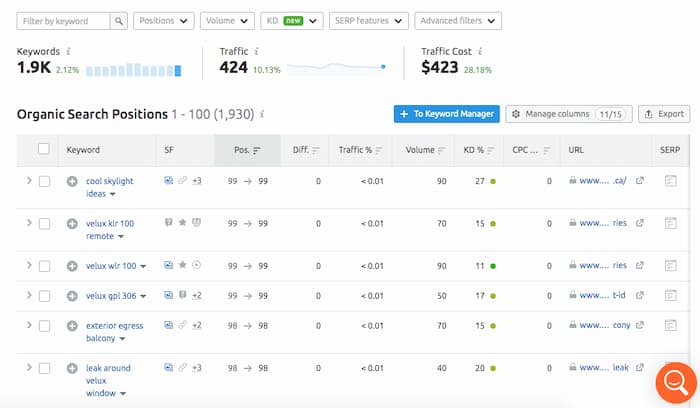 #6-Learn how to read SEO reports
#6-Learn how to read SEO reports
The basic principles of SEO are not difficult to grasp, however, for a person who isn’t familiar with SEO, reading reports is like learning a foreign language. This presents a problem whether you’re doing it yourself or hiring an SEO company to do it for you.
If you don’t understand what’s happening on your website how will you ever know whether you or your SEO company is doing a good job?
 You might think the most obvious clue is whether your bottom line is improving, however, this is not always indicative of the work performed. The buying trends that developed in 2020 have left many businesses in shortages of supply due to the growth of demand.
You might think the most obvious clue is whether your bottom line is improving, however, this is not always indicative of the work performed. The buying trends that developed in 2020 have left many businesses in shortages of supply due to the growth of demand.
Did your SEO company facilitate your increase in sales or did the circumstances in 2020 make them look good? Here are a few metrics that can tell the story.
Important metrics
The following is a list of items that appear on your report that are important indications of what’s happening on your website.
Page-views vs Unique page views: see how many times a page was viewed for the first time vs total visits to that page
Average time on page: Self-explanatory, however, this metric is an important KPI because it can tell you how engaged visitors are in your content. If you have a 5000-word article and no one stays longer than 30 seconds it may be time to repurpose or rewrite that content.
Bounce rate: The bounce rate is defined as the number of times a visitor lands on your page and hits the back button. Low bounce rates typically indicate good content, good navigation (the page leads visitors to another), or good conversions.
Conversion rate: The goal(s) that you have for visitors who land on your website can be defined in Google Analytics. Goals can be a sale, a completed contact form, an email opt-in, or a destination page. The conversion rate gives you insight into the effectiveness of your website as a tool for generating leads and sales.
Traffic by source report
You need to know where the majority of your traffic is coming from to understand the success of your SEO efforts. One report that gives you a broad summary can be accessed by clicking on Acquisition, All Traffic, Channels.
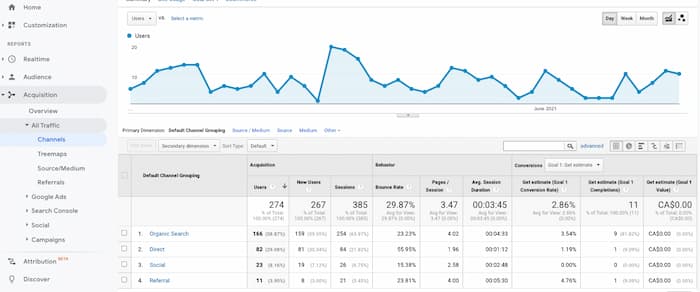 This report shows you the sources of traffic that your website is receiving. Here are the sources listed:
This report shows you the sources of traffic that your website is receiving. Here are the sources listed:
- Organic: traffic that is coming directly from search engines
- Direct: Number of people that typed in your URL to land on your website
- Social: The number of visitors from social media websites
- Referral: Number of visitors that came to your site from another (directory link such as Yelp, Yellow pages, etc., blog post, or any website that has a link to your website)
Traffic by page
Analyzing your traffic by page is useful to see how each page on your website performs. It’s important to see whether you’re driving visitors to the most important pages on your website and what they do once they’ve landed on the page.
Sometimes you might have great traffic to your blog pages, but no one is clicking on your service or product pages. Knowing how your website is functioning this way is crucial for planning your future strategy.
#7-Be aware of factors that affect your overall sales
One of the advantages of digital marketing is that almost everything is measurable. It’s important to keep in mind that there will still be other forces at work that will affect the effectiveness of your SEO strategy.
For example, you may be improving your online presence and building traffic successfully, but if your company has terrible reviews, you’re in big trouble. It doesn’t matter how many qualified leads land on your website when they all end up running the other way after reading a review.
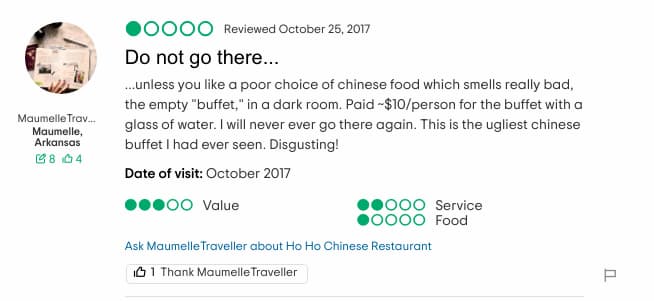 What if people are landing on your site but leaving? Your content is good, your keywords are accurate and your SEO seems to be working. Have you considered the possibility that your website is an absolute eyesore?
What if people are landing on your site but leaving? Your content is good, your keywords are accurate and your SEO seems to be working. Have you considered the possibility that your website is an absolute eyesore?
 If you have a website that looks like it’s from the 70’s that’s hard to read or navigate, no one is going to want to stick around for long when there are better options.
If you have a website that looks like it’s from the 70’s that’s hard to read or navigate, no one is going to want to stick around for long when there are better options.
With a strong SEO foundation, the sky is the limit
There are so many options when it comes to building a successful online business. Not everyone has the patience to learn and apply basic SEO principles. Then again, not everyone owns a successful online empire.
Google is undoubtedly one of the largest sources of targeted traffic that is available to small businesses. Take advantage of the knowledge and resources that are in plain view for everyone to see, and build your website with a strong SEO foundation. When you’ve taken the right steps, the sky is the limit.



